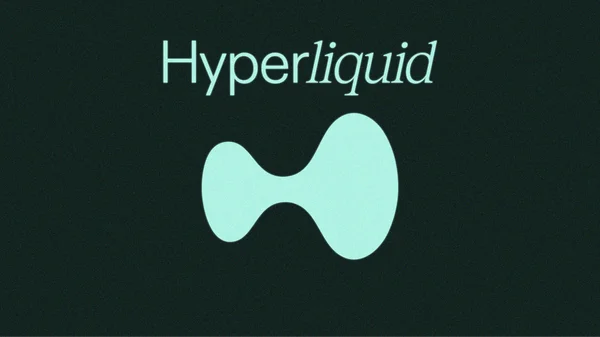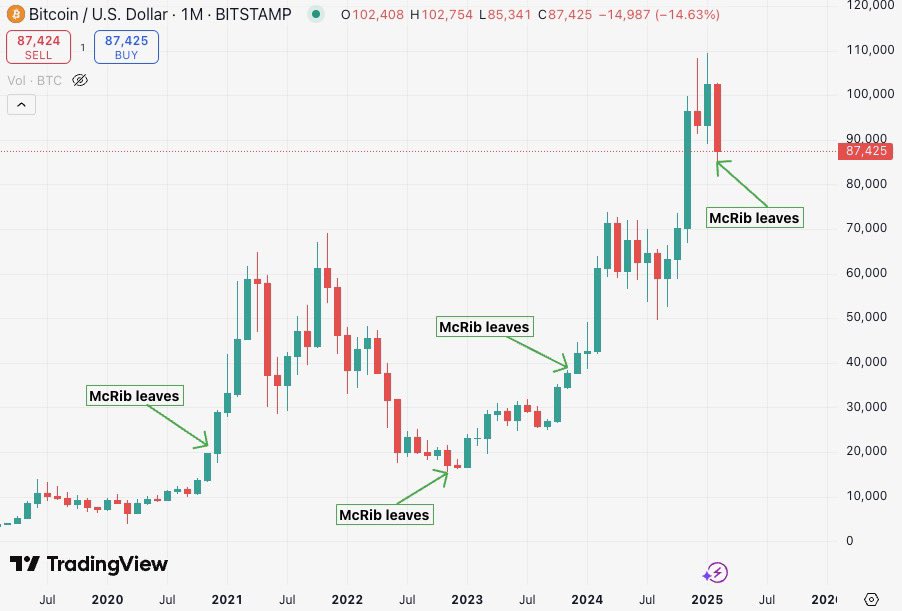Breaking News

Popular News






Enter your email address below and subscribe to our newsletter
Stay On Top

The McRib Effect: Does Bitcoin Surge After the Sandwich Says Goodbye?
In the quirky corners of the cryptocurrency world, where memes often hold as much sway as market fundamentals, a peculiar theory has emerged: the so-called “McRib Effect.” This tongue-in-cheek hypothesis suggests that the price of Bitcoin tends to rise significantly after McDonald’s removes its cult-favorite McRib sandwich from the menu. Today, February 26, 2025, with the McRib reportedly off the menu once again, it’s a perfect moment to dive into this oddball correlation and see if there’s any meat on these bones—or if it’s just a saucy distraction.
A Brief History of the McRib and Bitcoin’s Dance
The McRib, a barbecue-slathered pork patty with a devoted following, has been a limited-time offering at McDonald’s since its debut in 1981. It comes and goes with a rhythm that’s unpredictable yet oddly seasonal, often appearing in late fall or winter before vanishing again. Bitcoin, meanwhile, has been on its own rollercoaster since 2009, swinging from obscurity to six-figure valuations. The idea that these two—fast food and digital gold—might be linked started as a bit of internet fun but has since gained traction among crypto enthusiasts.
Observers have pointed to specific years where Bitcoin’s price seemed to spike after the McRib’s departure. For instance, posts on X and articles from crypto analysts highlight a pattern: in four out of seven instances since 2016, Bitcoin’s price reportedly surged after McDonald’s pulled the sandwich. The most dramatic examples come from 2017 and 2021, when Bitcoin allegedly notched gains exceeding 200% within 90 days of the McRib’s return—though the narrative has since shifted to emphasize its exit as the trigger.
Digging Into the Data
Let’s break this down with what we know. The McRib typically reappears in October, November, or December and sticks around for a few weeks to a couple of months. Its exit often aligns with the turn of the year—a period that sometimes coincides with broader market trends. Here’s a look at some key years:
Some claim Bitcoin “historically goes up >2x” after the McRib leaves, with posts on X from users like
@internbrah and
@goldtoothbando touting this trend. But the evidence is spotty. In 2018, Bitcoin plummeted to $3,250 post-McRib, and 2022 saw no recovery after its exit. The 2020 and 2023 cycles also show mixed results, with gains often tied more to macroeconomic factors—like stimulus or ETF approvals—than a sandwich’s farewell.
Correlation or Coincidence?
The McRib’s off-menu moment often lands in January or February, a time when markets can shift due to year-end profit-taking, tax-loss harvesting, or seasonal optimism (think “January Effect”). Bitcoin’s price movements, however, are driven by a complex web of factors: global liquidity, regulatory news, institutional adoption, and pure speculation. The idea that its departure signals a doubling in Bitcoin’s price feels more like a statistical cherry-pick than a reliable pattern.
Analysts like Nick Maggiulli of Ritholtz Wealth Management have playfully explored similar ideas, noting the S&P 500’s slightly higher returns (0.1% vs. 0.04% daily) when the McRib is available. But Maggiulli’s point was clear: correlation doesn’t equal causation. The McRib’s timing often overlaps with historically bullish periods for assets, not because pork patties move markets, but because of broader economic cycles.
The Meme Lives On
Today, with the McRib freshly departed as of February 2025, the crypto community is buzzing with speculation. Bitcoin’s recent climb past $100,000 in December 2024—right after the McRib’s return—has only fueled the meme. If it doubles again from here, hitting $200,000 by spring, the “Don’t fade the McRib” crowd will have a field day. Yet, skeptics argue this is just market noise dressed up in barbecue sauce.
So, what typically happens to Bitcoin’s price after the McRib leaves? Sometimes it jumps, sometimes it flops—much like the crypto market itself. There’s no consistent evidence to suggest the sandwich’s exit is a crystal ball for Bitcoin bulls. Instead, it’s a reminder of how humans love a good story, especially one that pairs digital riches with a greasy guilty pleasure.
Conclusion: Hold the Sauce, Not Your Breath
As of February 26, 2025, Bitcoin sits at a pivotal moment. Will it soar post-McRib, as the meme predicts? Maybe. But pinning your portfolio on a pork sandwich is as risky as betting on a bull run without checking the charts. The McRib Effect is a tasty tale—best enjoyed with a side of skepticism and a napkin for the inevitable mess. For now, keep an eye on the market, not the menu.